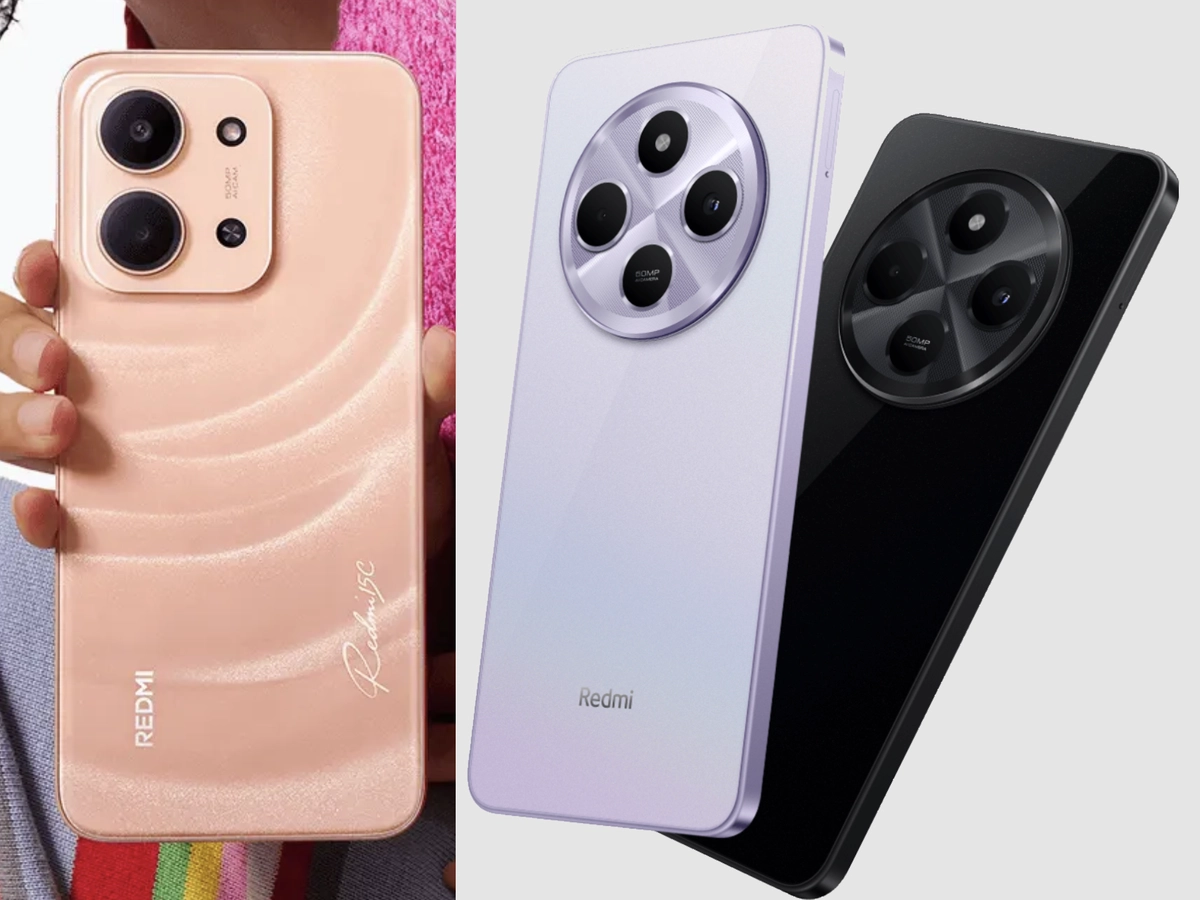5 Differences Between Redmi 15C and Redmi 14C
If you want an affordable but reliable phone, Xiaomi is always on the list. One of the most recommended models in 2025 is the Redmi 15C. It is the successor of the Redmi 14C, which is still popular among buyers. Both are entry-level phones with interesting features in some areas.
Since the price is almost the same, many people may feel unsure about which one to buy. The main differences are in design, screen, camera, and battery. Here are five things that set them apart.
1. Design and IP Rating

Design is one of the easiest things to notice. The Redmi 14C has a large round camera module placed in the middle. Some people may not really like this design because it looks less simple than the Redmi 13C.
The round module only works well if there are many cameras inside. The Redmi 14C only has one main camera, so the other circle is just decoration. The Redmi 15C comes with a better choice. It uses a square module with two circles. One is for the main camera, and the other is for the depth sensor.
The Redmi 15C also looks more modern. The Moonlight Blue and Twilight Orange versions have a rippled pattern on the back. The Mint Green and Midnight Black versions are plain. The Redmi 14C has its own styles too, such as the star pattern on the Starry Blue version, while Midnight Black and Dreamy Purple are plain.
For durability, the Redmi 15C is stronger because it has IP64 certification. It can resist dust and small water splashes. Even when the screen is wet, it still responds to touch. The Redmi 14C does not have an official IP rating, although Xiaomi says it can resist light splashes.
2. Screen Size and Features

Moving to the screen, the two phones are almost the same. Both use an IPS LCD panel with only HD+ resolution. The Redmi 15C has been better in one part. Its screen has a 120 Hz refresh rate, so the movement looks very smooth. This feature is rare in phones at this low price.
The difference in size is very small. The Redmi 15C has a 6.9-inch screen, while the Redmi 14C is 6.88 inches. The gap is so small that it is hard to notice with the eyes. In daily use, both will feel almost the same.
Even though they are entry-level phones, both already have TUV Rheinland certification to protect the eyes. The Redmi 14C has two protections; blue light reduction and flicker-free. The Redmi 15C adds one more, circadian rhythm adjustment, which helps when using the phone in a dark room.
Both are also strong enough. Their screens are covered with Gorilla Glass 3. This makes them more resistant to scratches and cracks when dropped or bumped. Users can feel more relaxed when letting children use the phone or when carrying it outdoors.
3. Operating System and Interface

The Redmi 14C came out in 2024 in some markets. It runs on Android 14 with the HyperOS interface. This was already a good step, since several other Xiaomi phones released in the same period still used MIUI.
The Redmi 15C, as the next model, already runs on Android 15 with HyperOS 2. Even so, the change is not very big. It is not as big as the move from MIUI to HyperOS that we saw on the Redmi 14C.
Both phones do not come with a clear promise of OS upgrades. Still, this is normal for phones in this low price range. For performance, both use the Helio G81 Ultra. This chipset is enough for daily use. You can also play games, but you may need to adjust the settings.
4. Front Camera Resolution

In the camera section, both Redmi 15C and Redmi 14C are simple. The camera module may look like it has many cameras, but only one works. The main camera has 50 MP with an f/1.8 aperture. It also supports PDAF, so the focus can adjust automatically when taking photos.
The main camera is also supported by AI features and the Xiaomi Imaging Engine. These make the photo process faster and more stable, so users can capture moments without delay.
Even so, the results are not always consistent. Sometimes the photos are not very good in difficult lighting. But in most cases, around 7 out of 10 shots look fine. This is still good for a budget phone.
The small difference is on the front camera. The Redmi 14C has a 13 MP selfie camera (f/2.0). The Redmi 15C reduces it to 8 MP (f/2.0). This drop in resolution does not give a big effect. The quality is still similar to other entry-level phones.
5. Battery Capacity and Charging

The Redmi 15C brings a big change in the battery. Its capacity is now 6000 mAh, higher than the 5160 mAh of the Redmi 14C. In simple terms, this means the phone can last longer and support daily use better.
Redmi says the 15C can stay on for up to 2.14 days with normal use. It can also play music for 82 hours, show videos for 22 hours, and run social media apps for up to 20 hours.
The Redmi 14C also has good battery life. It can stay on standby for up to 21 days. It can last 42 hours for voice calls and 22 hours for video playback.
The Redmi 15C also improves charging speed. It supports 33W fast charging. The Redmi 14C and even the Redmi 13C only supported 18W charging. This makes charging the Redmi 15C faster. A larger battery feels more useful when it also charges quickly.
In the end, both phones are strong options in the budget class. As a newer model, the Redmi 15C gives some clear upgrades, especially in battery size and charging. Even with these changes, both models remain very affordable at around US$110.
